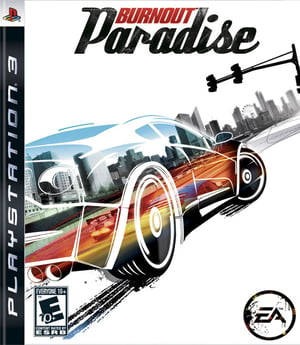 Better to burn out than fade away.
Better to burn out than fade away.
Hello! It’s me, professional internet storytelling professional, Alex Crumb. Today is the tenth anniversary of the million-selling PlayStation 3 and Xbox 360 action-driving game, Burnout Paradise, developed by Criterion Games and published by Electronic Arts.
I love Burnout Paradise. I 100% completed the game twice on PS3; once before the trophy patch, once after. I love the Burnout series. I completed Burnout 2: Point of Impact (3 out of 5 stars) on GameCube. I ripped Metallica’s Master of Puppets onto my Xbox in college and listened to it on repeat while playing the road rage mode in Burnout 3: Takedown (5 out of 5 stars). Maybe Burnout 3 gave me appendicitis in 2004? Medical science is a mystery.
Ten years? Wow! It’s amazing the restraint games from this era demonstrate, comparatively speaking. Burnout Paradise is a dead-ahead arcade racer. Self-confidence trembles and busts from its core locomotion. Its monstrous video-frictions crackle at each speed-boost, at each arcing turn, and at each concussive collision. Its micro-moment design remains unmatched ten years on, even alongside developer Criterion Games’ later, larger-budget efforts with Need for Speed: Hot Pursuit (4 out of 5 stars) and Need for Speed: Most Wanted (4 out of 5 stars).
Burnout Paradise was Criterion’s tipping point. It was their high-definition playground; a demo tape for the big time. But make no mistake, it was also Electronic Arts’ beta test for the coming decade of game development where any time a player spent in a game was a victory, for good or for ill. The line from Burnout Paradise to Star Wars Battlefront II ($ out of 5 stars) is straighter than you might believe.
So, let’s examine this moment in history.
part i: In Control
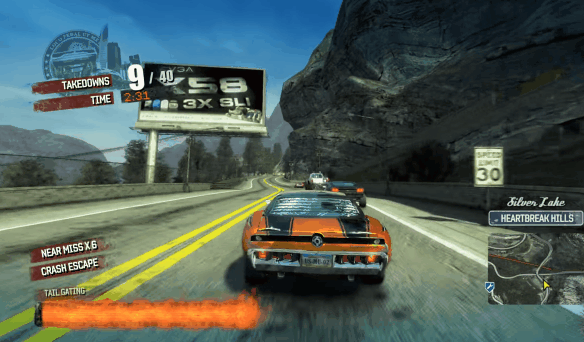
Burnout Paradise, circa 2008.
In paradise, every streetcorner would be a starting line.
In paradise, every stranger would be a fellow racer.
In paradise, your whole life is the menu! You don’t select words from a list. You travel!
Dig, if you will, a swirling mush of chromed-out PowerPoint letters jerking off in the darkness of a conference room. Blue light glances off an ovular table. A man with hair plugs and an MBA from the University of Florida crayons words into your mind.
“Online-centric. Revolutionary. Facebook for games.”
I’m paraphrasing, of course, but these are very-nearly the exact words of an Electronic Arts executive describing how to build the hydrogen bomb of video games. That bomb went off in 2008 and the fallout has now truly begun poisoning us. This guy is talking about total transparency into a game world from the back end. He is tracking how, when, and why players interact with the product, with the content, his publishing studio has funded.
That game he’s talking about isn’t Burnout Paradise. It’s Need for Speed: Hot Pursuit, Criterion’s follow-up to Burnout.
This moment is fascinating. Burnout Paradise, is a game torn between eras: an era of incalculable risk, represented by their earlier Burnout 3: Takedown, and an era of glassy control, represented by NFS: Hot Pursuit, yet to come. You can tell by the PlayStation 3 “Spider-Man font” along the left side of Burnout Paradise’s game box that it’s an early PS3 game. This is indicative of a studio either:
- Doing what worked on the PS2, at a higher resolution (Devil May Cry 4)
- Testing some stuff out
Burnout Paradise was the second option, namely: open world and social experiments. Admittedly, Burnout 3 included a remarkable online infrastructure, especially for a game on the PS2 / Xbox, often cited as the reason why Criterion didn’t release the game for the internet-stupid GameCube.
Look, we’ll get into this in greater detail in a moment, but I’ve been under the hood at a lot of technology companies, so to speak. To be blunt, when there’s an internet connection, like the one the Burnout games had, there’s user data. When there’s user data, there’s informed decisions. When there’s informed decisions, there’s calculated risks. When there’s calculated risks, there is a modicum of control.
Burnout Paradise is a video game in control.
And this is how Criterion Games earned the trust of Electronic Arts to test out some ideas. This is why games-as-a-service have become the sure-thing investment / prospect in 2018. Their glassy value proposition is easy to calculate and its content is easy to exploit.
This need for publisher transparency into the games they were funding did not develop in a vacuum.
part ii: Revenge Against You Fucking Children — April, 2006
I’m sitting on a futon underneath a bunk bed. The wireless Xbox 360 controller is the most ergonomically taut game device I’ve ever held. Burnout Revenge (4 out of 5 stars) is running somewhere near 720p, 60FPS on my roommate’s 25 inch plasma flatscreen.
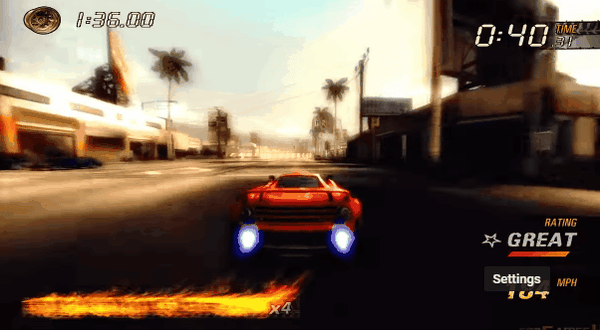
Burnout Revenge, Xbox 360, circa 2006.
In a year, it would all be over. In one year and a month, it’s May 2007, and I’m graduating college. In one year and seven months, it’s November 2007, and Call of Duty 4: Modern (5 out of 5 stars) Warfare and Assassin’s Creed (2 out of 5 stars) will have manifested.
In two years, it’s April, 2008, and Grand Theft Auto IV (4 out of 5 stars) arrives. Nico Bellic’s America is real, painful, and Hudson River-brown. In September, 2008, most of the senior people at my company are laid off. Actual-America enters a real, painful, East River-brown recession. A few weeks later, roughly one thousand Herman Miller chairs, costing $600 each, are set up at every single desk in my office building, ordered months prior to the layoffs.
As a result of this embarrassing miscalculation I’m sitting in a designer chair, making $30,000 a year to do the work a man making $300,000 a year was doing few weeks prior. 2008 was fucked up.
American industry, at least for a decade or so, had entered an era of calculated risk. All costs became measurable. Otherwise, wow, what an embarrassment! So keep from wasting time, money, and talent on an incalculable risk. Instead, make the risk calculable. Then take it! And if it goes sideways, fire the data analyst. That’s why god invented the middle-man, after all.
This is video games’ revenge. This is the games industry forced into a corner after half a decade of attempted Halo- and Zelda-killers. Because players didn’t show up for over-produced miscalculations, publishers threw up their hands like an orange juice-stained dad towering over breakfast, shouting, “Well, then what DO you want, Billy?! Because yesterday, it was orange juice.”
And Billy yells, “Fuck you, dad! Killzone? More like Kunt-zone!”
And the orange-juice stained dad shouts back, “That game cost more than Panama’s national deficit to develop. It is the year 2008 and you are making market research difficult, Billy!”
And Billy yells, “Shut the fuck up, dad! I’m gonna go live-Tweet The Apprentice at Zayden’s house.”
And the orange-juice stained dad experiences an oral sex-like feeling upon realizing his golfing buddy over at that company Twitter had been right all along. With larger publishers having exhausted the normal options:
- Genuine creativity
- Competently mimicking genuine creativity
- Guessing what the market wants
It was time to just spy on players and err on the side of their baser instincts. Thankfully, broadband internet connections had proliferated and Halo 2 (5 out of 5 stars) had made everybody comfortable with online console competition. The Brits over at Criterion had enough vision to track player behavior in real time within their game. They could note where players were spending time, which events they preferred, and which might’ve been wasted energy on their part to develop.
This wasn’t the end of the world for games-as-a-game, but you can see it from here.
The risks of game development had been reduced. It’s likely Electronic Arts couldn’t be happier with the resulting game. Ironically, the game that birthed this mindset was Burnout Paradise.
part iii: The Land Of Wind And Ghosts
ACTUALLY TALKING ABOUT THE GAME NOW!
The haunted Disneyland diorama blurs into the unceasing Sega-blue sky. This is a pristine American city, complete with a baseball stadium, a ranch, a country club, one trashy radio DJ, and zero human beings.
Like Breath of the Wild (5 out of 5 stars) nine years later, Burnout Paradise’s endless, time-frozen high-noon becomes a Twilight Zone-style dog whistle for experimentational mayhem. What would you do with an unkillable automobile in a world without consequence?
Everything!
Nothing!
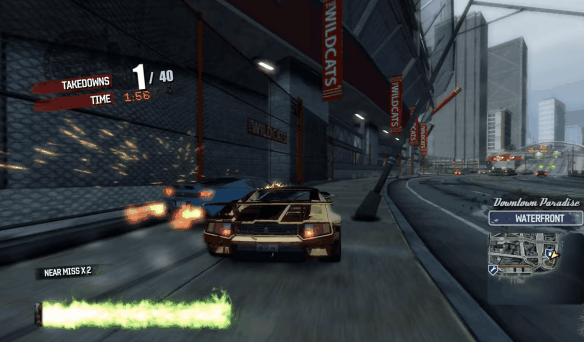
A Twilight Zone-style dog whistle for experimentational mayhem.
The glee is ceaseless. The driving is joyous. The audio design is crunchy and delicious, whether in motion or crashing to a halt. Burnout Paradise’s afterlife fantasy scenario encourages you to hip-check a sportscar into a median amidst the unflinching traffic-facsimile. There’s no harm done. The cars are literally rendered without drivers. You can earn, uh, points, I guess we’ll call them, for smashing billboards and certain chain-link fences. These are often hidden in the most Metroid-locations imaginable: in sight, just out of reach. That’s your call for exploration.
Exploring exposes the games’ seams and busted stitches. All races on the Paradise City open world map must conclude one of nine potential points. While this is a clever redeployment of resources by the developers, it means you’re spending most of your time driving around familiar neighborhoods. Returning to each location reminds you there’s nothing beyond the ocean’s Truman Show-skybox at the marina. The curling mountain roads are a thrill to powerslide between, but there’s nothing at the wind farm at the map’s westernmost point. Discovered shortcuts are meaningless when the A.I. racers will whip you with rubber bands for earning too much lead.
Even with Criterion’s hand-crafted road-design, complete with banked turns, blind hills, and narrow tunnels accentuating the blazing fear of reckless driving, an open world demands concessions. You’re always ending up in the same few places. Your wins and losses are suspiciously close, like, every single race. The stunt modes are flimsy, especially when you realize one lap around the rock quarry will earn you more than enough points to meet the requirement. The time trials can all be mastered by simply not crashing in the race. The car shutdown mechanic—chasing poltergeist automobiles and slamming them into walls to—to unlock them, while quaint, is almost so good, it makes me wish deranged psychopaths were driving around the city at all times.
No matter how much you explore the city, the reward never equals the thrill of pinning your finger to the accelerator and trying with all your might to go straight, something they mastered ages ago in Burnout 3.
Criterion reveals its greatest strength and its greatest weakness in Burnout Paradise.
They made a heck of a driving game. They made a vacant user interface.
part iv: Social Interface
There are few fine-dining experiences in our current western-developed video games. Generosity is flagging in 2018. The same social conversation, that oh-so luscious user-touch, valued above all else in the tech industry, has turned against its creators. In 2018’s continuous hyper-blurting environment, hardcore game-likers hivemind all the inconveniences foisted upon the player base at the speed of a thousand personality defects. What’s more, that same vocal minority can summon archival footage of an era 10 years ago when that wasn’t the case.
In Burnout’s era, pointless locomotion around an environment was its own reward because it was tanked up by earnest human-to-human encouragement.
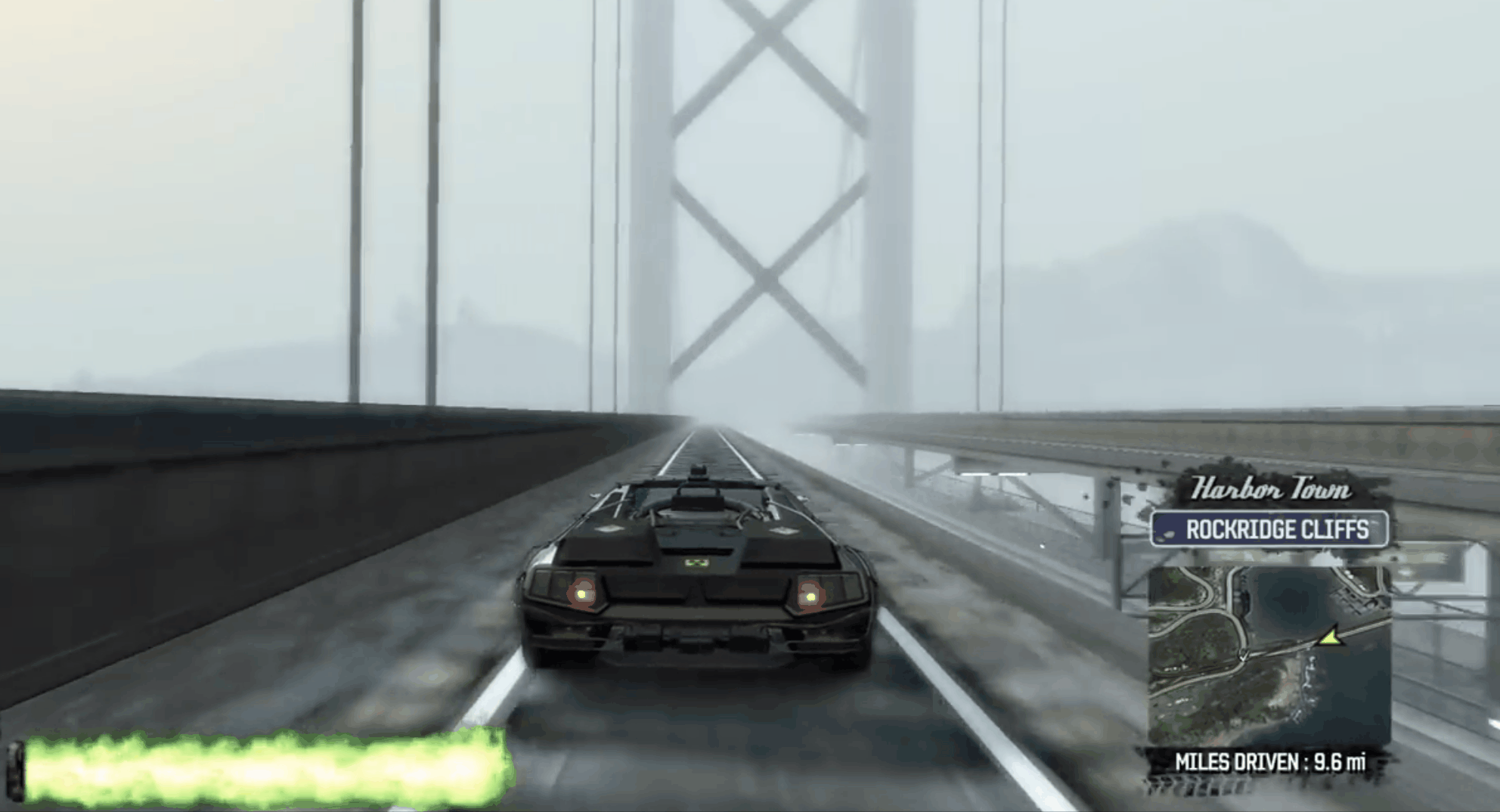
DeLorean-style hover car, Burnout Paradise DLC, February 2009.
Burnout Paradise was a freestyle-skiing jungle-gym. Criterion has stated they didn’t want users stuck in menus, so they included tools to facilitate competition, the Easy-Drive feature, bound to the RIGHT directional-pad. Setting matches online remains a chore in games. How thoughtful, Criterion! Now we can run and play together in this big, weird, concrete world.
Criterion knew open worlds need stuff at literally every corner. They built the stuff into every intersection, into every opportunity for a player to interact with the game.
Taking that logic one step further and ten years later, and we have the modern loot crate. This is called “baking it in.” Literally pinpointing the exact moments of character and quantifying the value of that moment.
Can the player get from driving a car at a given point on a map to competing in a race? If so, how many actions are they from that engagement? How long does it take? How long do they keep playing, per action achieved / race completed? How sticky are the activities in the game? If the player retention falls below a certain degree, why is that, and how does the developer need to modify their design recipe to keep that person playing?
What if the player was motivated by a spin at a wheel of random rewards?
What if the player was shown the time-spend mathematics of that spin, and could instead offer money instead of time? Congratulations, you’ve invented the loot crate, and the player is literally paying a developer to NOT interface with software they already paid for in the first place.
It’s time to summon the specter of 2017’s Star Wars Battlefront II and remind everyone Electronic Arts created a persuasion machine that accepts money and gives players their time back. And it all began 10 years ago with transparent, always-online games like Burnout Paradise when somewhere, far inside Electronic Arts, a UX analyst noticed players that spent time in their games’ multiplayer matches were XX% more likely to play again tomorrow. This cohort of recurring players using the software XX% times / week were likely XX% more likely to buy DLC at a $XX.XX price point that costs the developer $XX.XX to assemble.
Ergo, repetitious interfacing with a game’s social aspects became the game design. This is why you’ll instantly notice the difference between the priorities of Burnout Paradise and Criterion’s next game, Need for Speed: Hot Pursuit.
Burnout begat Need for Speed, begat the Autolog feature, EA’s cartoon-lunatic interpretation of a social network to keep players connected. Autolog begat Battlefield 3’s Battlelog, another stab the swirling social features of designed microtransactions, be they online passes, season passes, DLC, or the eventual Madden cards or Battlefront II’s loot boxes.
Burnout Paradise was the seed of modernity. While whatever it began or ended on that day ten years ago remains up to interpretation, a certain risk-taker’s howl was lost when the arcade racer died with it, ironically birthing the son that’d cut its throat in the night.
There were witnesses. What is will pass. Burnout might even come back.

